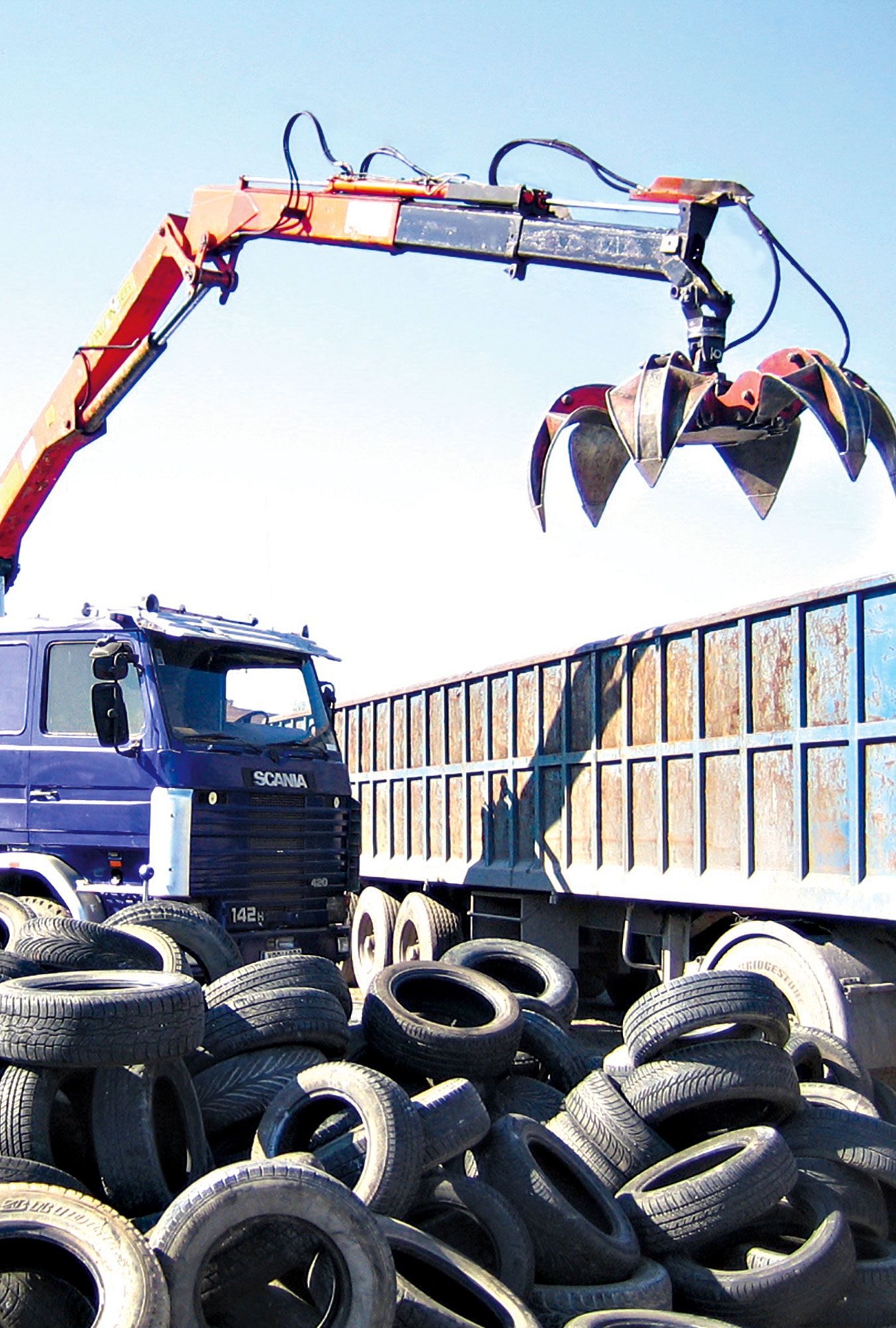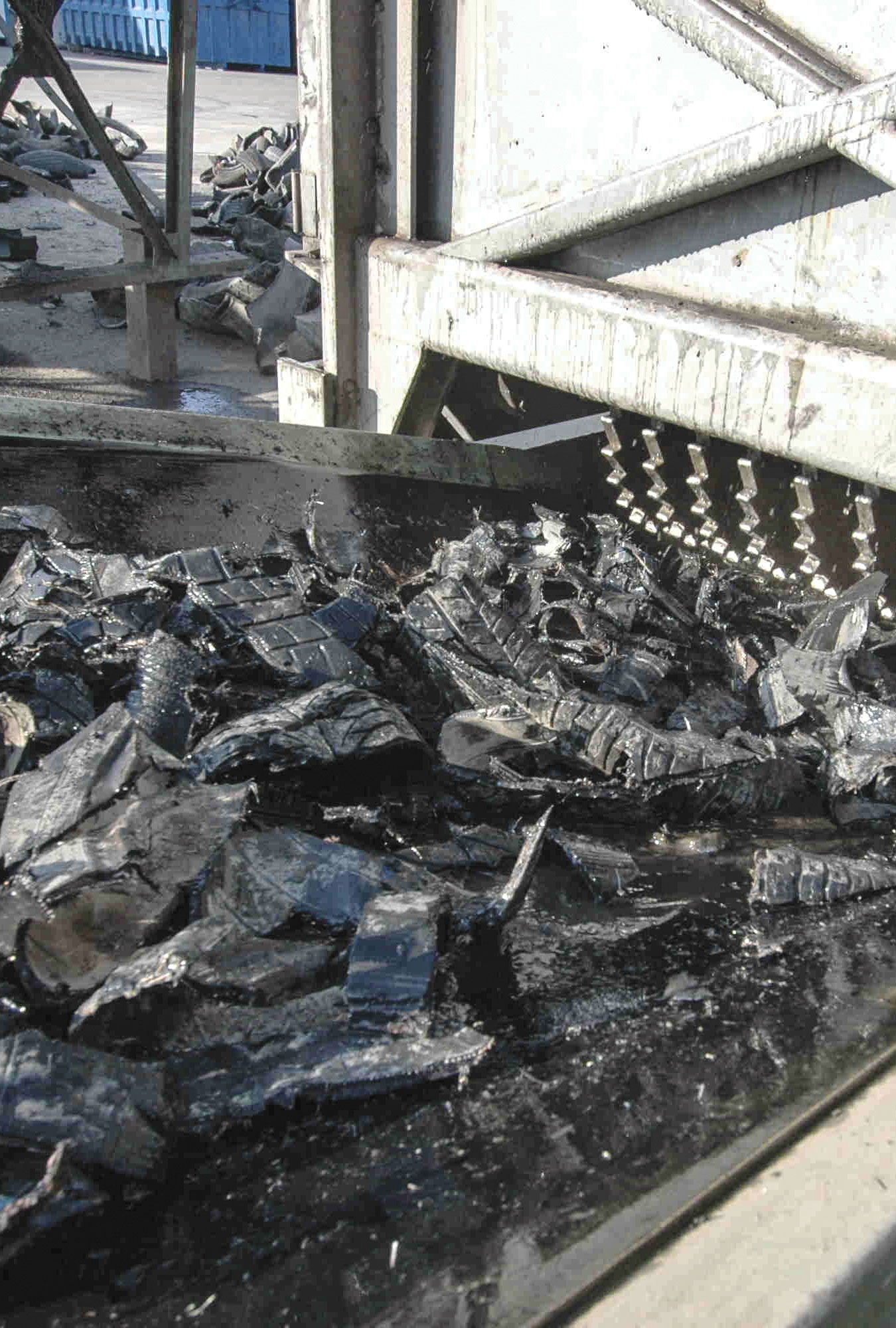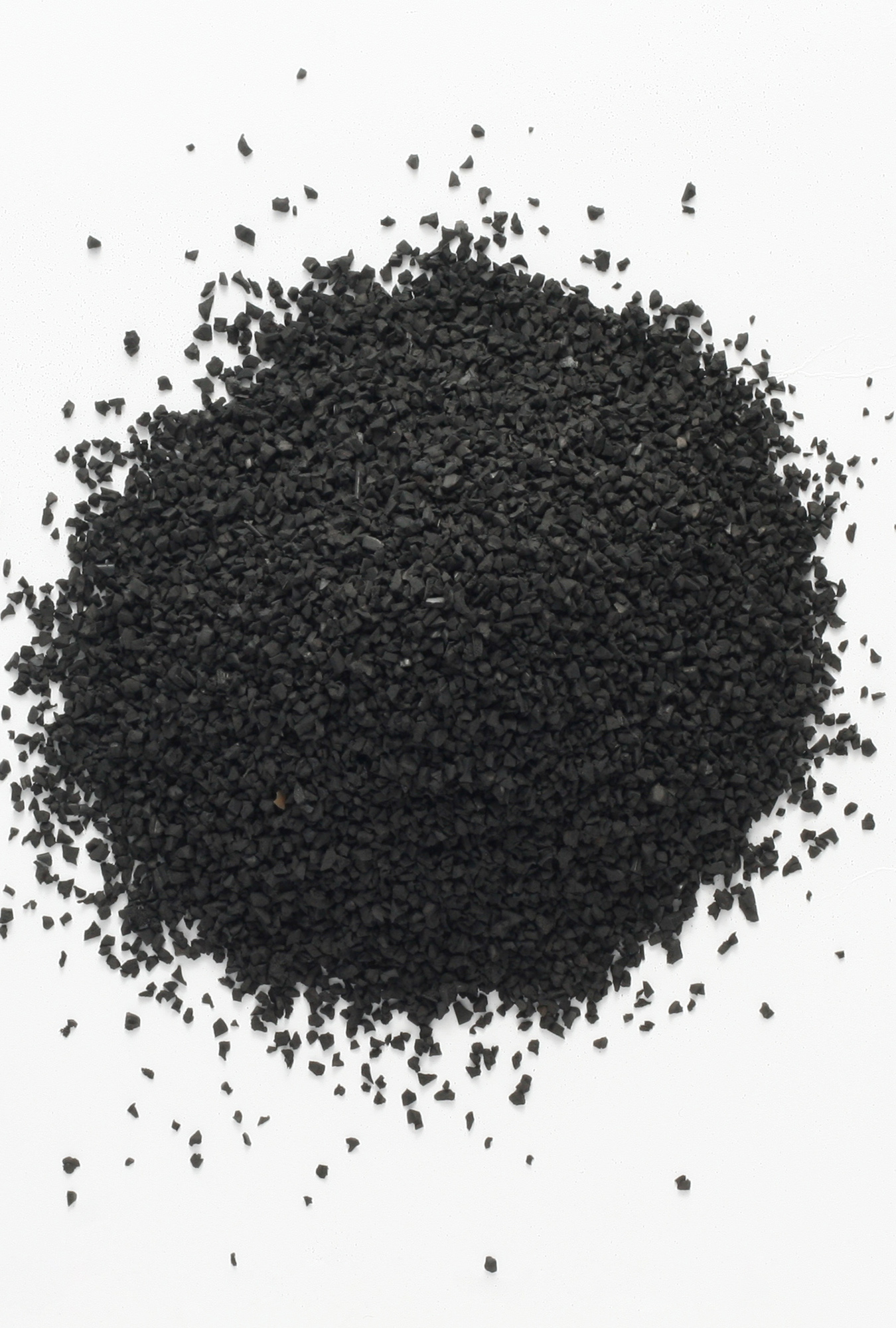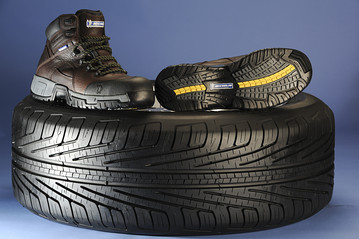
Used Tires
One of the primary characteristics of end-of-life tires (ELTs) is their challenging management and recovery.
The tires’ large specific volume makes their long-distance transport difficult, rendering their utilisation in treatment plants remote from the collection points unprofitable.
Their compact structure hinders any treatment process and significantly burdens the cost of production of the finished products and by-products resulting from recycling plants.
The recycling of end-of-life tires (ELTs) differs from the recycling of other end-of-life materials in the aspect that products derived from mechanical treatment of ELTs can only be used in small percentages as raw materials to manufacture-produce new tires.
Products derived from ELTs processing can become raw material for the creation of new different products and, in some cases, replace other primary materials showing equivalent or better properties.
These materials appeal to limited markets both in Greece and in the rest Europe. It is therefore imperative to create and develop new markets for secondary products derived from the recycling of ELTs, to impede the creation of additional obstacles in the safe management of waste. As the disposal of tires in landfills has been prohibited since 2003 and there is limited possibility of storing it for long periods of time in licensed warehouses, the need to improve the rate of absorption of tire recycling products becomes even more vital.
The public infrastructure sector is an important market for many intermediate and final recycling products and can absorb large quantities of semi-processed (shredded) tires, tire rub or powder.
Collection
Ecoelastika collaborates with collectors/transporters in every geographical area in Greece for the collection and transportation of end-of-life tires (ELTs), from the collection points to the areas of final recovery.
The collection of ELTs takes place directly at the collection points where the replacement of old tires with new ones is done, i.e., tire dealers and vehicle repair shops all over the country, under the specific terms agreed between Ecoelastika and the shops.
Each collection point, when it has a stock of at least 60 passenger car tires and/or 10 truck tires and/or 45 moto tires, informs Ecoelastika. The ELT co aims at collecting the tires from collection points within three (3) days of the collection request registration.
In addition to the collection points, Ecoelastika contracts separately and collects in special terms tires from dismantling facilities which have an agreement with the Alternative Vehicle Management of Greece, and from owners of ELTs, usually municipalities, technical companies, public companies, etc.
Ecoelastika delivers the collected ELTs to licensed recovery units with which it cooperates, for their recovery.
In order to achieve the system’s optimal operation, Ecoelastika uses the appropriate technological means to electronically monitor all stages of the tire management process. Through this system, all data (both qualitative and quantitative) are recorded in real time; every detail regarding the management of ELTs (collection–transportation–recovery) is recorded, so that all stages of the supply chain of ELTs management is fully traceable.
The immediate and uninterrupted collection of end-of-life tire transport information through Ecoelastika’s main server contributes substantially to the continuous and immediate improvement of the services provided by the system. At the same time, the statistical data analysis permits the extraction of useful conclusions, which further help the process of managing used tires.
Ways of Recovery
End-of-life vehicle tires can be used both for energy recovery and as materials.
The existing recovery practices for used tires are currently the following:
- Mechanical processing, granulation and separation of products and by-products, for use in recycling applications
- Energy recovery (co-incineration), as an alternative fuel in the cement industry within Greece
- Exports for energy use in energy-intensive industries
- Exports for reuse
End-of-life tires can be used as an energy source in energy-intensive industries. Such industries are mainly cement, steel, lime, brick industries, electric power plants, paper industry etc. On a European level, the usual destination of end-of-life tires, either whole or shredded, is the cement industry. There, used tires are fed together with the raw material into rotary kilns, where they are used both as an alternative fuel and as primary material for the production of clinker.
For their use as materials, end-of-life tires go through a process, during which they are repeatedly shredded in smaller and smaller pieces, while, simultaneously, takes place a mechanical separation of the materials they consist of. From the mechanical processing of end-of-life tires, three materials are produced:
- The main product of mechanical treatment is rubber granulate or powder in various desired granules
- Metals as by-products contained in the tire structure to enhance its construction
- Linen also as by-products, mainly contained in tires of passenger vehicles
All 3 of the above materials are absorbed in final applications.
Tire recovery products & by-products
In Greece there are 6 mechanical processing plants.
The product of a typical mechanical granulation unit is: 65% rubber (maximum, due to the fact that the tires in Greece are very worn out) which is available in various applications of rubber products, approximately 20% iron, offered to the steel industry for recycling, and near 15% textiles, used as an alternative fuel in the cement industry.
The applications of end-of-life tires recycling products cover a wide range of materials depending on the granule size of the rubber granulate or powder, as well as the degree of the material’s purity.
End Uses

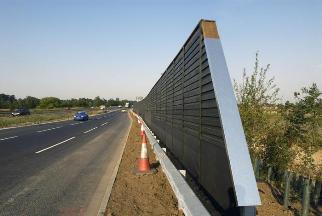
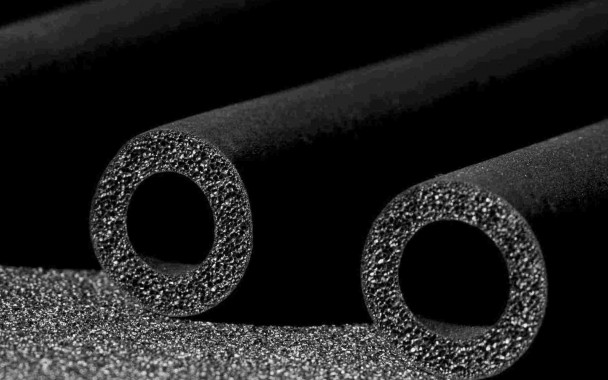
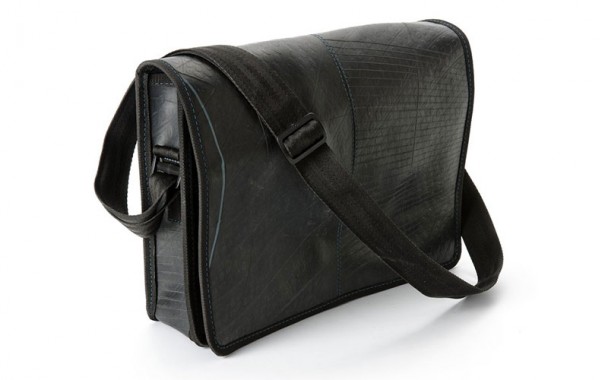
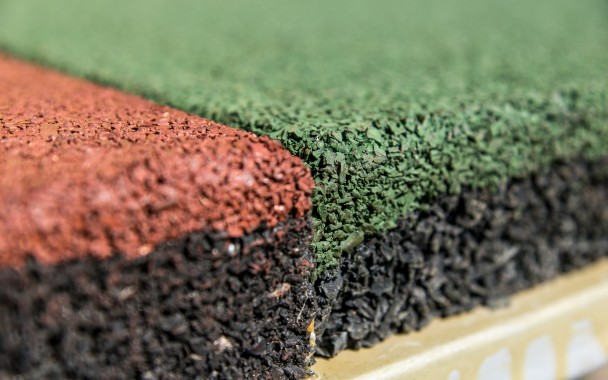
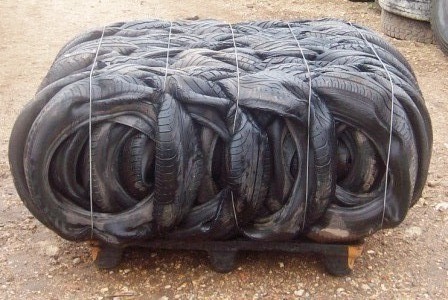
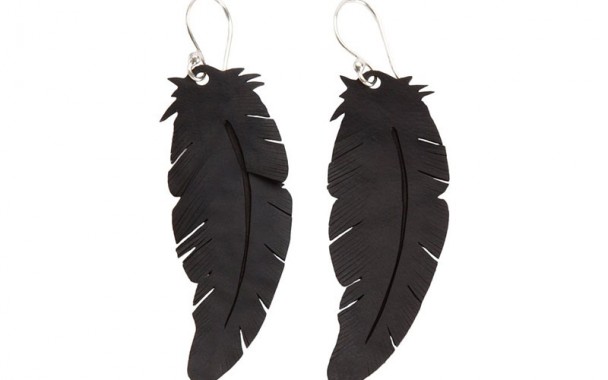
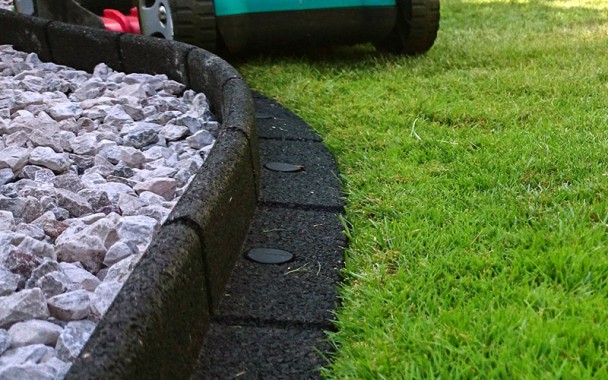
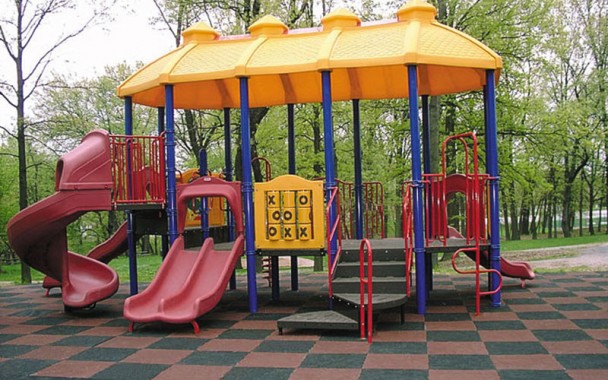
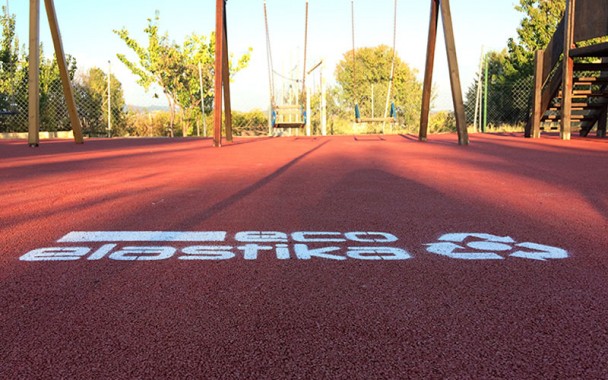
- Rubber balls in the form of compressed boxes as lightweight fillers for civil engineering projects
- Construction of landfills
- In a specific arrangement as sound curtains – soundproofing panels
- Floating docks
- In a specific arrangement for the reinforcement of slopes and embankments
↓ Pieces-Grains (100–300 mm)
- Construction of landfills – Restorations of Unmonitored Waste Disposal Sites (Dumps)
- Drainage zones of roads and structures
- Insulations
- Road paving material
↓ Rubber Granulate – Powder (0,5–6 mm)
- stadiums and sports venues paving
- Road construction
- Shoes
- Door mats, carpets
- Floor tiles
- Mattresses for pets
- Plastic wiring
- Thermal insulation mattresses
- Sports equipment
- Slabs and bricks
- Inner tire walls
- Colouring substances, inks, coatings
- Plastic car parts
- Flanges, gaskets
- Interior lining of ship double walls
Baled balls made of compressed whole tires in the form of boxes can be used, among others, in the construction of wave breakers and dams, slope and beds od rivers or seasonal streams. Where unstable conditions prevail, tire balls are an alternative to a range of conventional materials, such as stone structures, cement, gravel, protective sandbags.
End-of-life tires treatment products may be used to create soundproofing walls, to reduce noise on highways or railways, especially when they pass through residential areas. Noise can be reduced both by the use of shredded tires and by the use of rubber granulate as in special panel constructions.
Pieces of rubber are recommended as lightweight filler for use in many applications, including the construction of road foundation. Especially in areas where the subsoil is weak and unstable, this application is appropriate. The smaller the dimensions of the pieces, the greater the road’s resistance to traffic, as well as the total weight of the upper road structure.
Shredded tire has very good drainage properties, which depend both on the degree of compression, as well as on the size distribution of the pieces. Its drainage ability is similar to that of gravel used for the same purpose in the construction of drain zones. Moreover, during the operation of the landfill, the quality characteristics of the leachate produced are not hampered by the use of the tires. Unlike conventional materials, clogging is largely avoided. This use is already widespread in several EU countries.
In this application too, as in the construction of drainage collection zones in new landfills, shredded rubber can be used alternatively instead of gravel in both the construction of biogas relief zones and rainwater collection zones, with very good results in Unmonitored Waste Disposal Sites – Landfill restoration projects. This use is already widespread in several EU countries.
The pieces can be used as thermal insulation material in road construction projects, in pipe/drain excavations, as filler material, in building constructions as well as in commercial and industrial structures. They are used instead of traditional insulating materials such as extruded polystyrene (XPS) and other light materials, which have similar properties as tire pieces.
The need for the construction of a vibration absorption layer in recreational areas (children’s playgrounds, etc.) and especially in areas where elevated recreational equipment is installed is summarised in European specification BS EN 1177:1998, which specifies the necessary safety measures and control procedures in these areas. The use of new generation synthetic grass fibers in football fields also requires a loose layer of sand mixture and rubber granulate, which is layered on the artificial turf. This layer ensures the required elasticity of the surface of the football field covered with artificial turf, both for the needs of the game and for the safety of the players.
The rubber granulate can be incorporated into the asphalt mixture by two different methods, the wet method and the dry one. With the liquid method the rubber granulate acts as an asphalt modifier, while with the dry method the rubber granulates used to replace inert material. In both cases the rubber granulate is referred to as CRM because its use modifies the properties of the final hot asphalt. Rubber as an asphalt modifier is an inexpensive way to improve asphalt properties. Specifically, fewer indentations have been recorded on modified asphalt during the summer months as a result of high temperatures, as well as fewer fractures in the winter months because of low temperatures.
A significant improvement of modified asphalt properties is also attested in the case of traffic load, with a 164% fewer asphalt fissures after the passage of 2.000 vehicles.
Shoe soles can be fashioned from a range of different materials including leather, rubber, latex, polyurethane, caoutchouc, granulate and powder. The material can be used for the manufacture of either an entire sole or parts of it. The parts can be sown or welded together, and heat sealed with the main body of the shoe. In most cases the soles of end-of-life tires are attached with the upper shoe part by knitting or welding.
The usual process of mixing end-of-life tire powder or rubber granulate with polyurethane to produce rubber carpets, tiles and floors usually results in finished products, which have relatively low shear and tensile resistance and high wear rates from material friction.
The superficially modified rubber powder displays many shared characteristics with most of the traditional materials and a very well-structured surface. The material also facilitates connection with neighbouring materials during vulcanization, producing a hard and stable finished product.
Standards
End-of-life tires or their parts (granulate, powder, etc.) are used as feeding material for specific production processes, or as raw material for a range of applications and finished products. The chemical and physical properties of tires provide an indication of the range of applications in which the various materials resulting from their mechanical processing can be used. This is the starting point for the development of specific applications and/or end products.
Today, several standards have been issued for finished products from end-of-life tires, both for their manufacturing methodology as for their quality characteristics (ASTM, DIN, CEN, etc.).
Environmental Protection
End-of-life tires look like ‘inert’ materials because they do not decompose easily and do not pose a risk to either the ground or the air.
Their energy utilisation by the cement industry does not have a negative impact on the environment, because the incineration conditions (high temperatures, closed system, on-line pollutant monitoring) prevailing in the rotary furnaces, do not allow the formation of additional pollutants other than those that are already produced during the combustion of traditional solid fuels (e.g., petcoke, coal, etc.). Moreover, end-of-life tires do not contain halogens in their chemical composition, so the formation halogenated hydrocarbons (dioxins, PCB’s, etc.) during their energy utilisation is out of question.
Temporary storage of end-of-life tires does not entail environmental risk, on the condition that it is carried out in accordance with the approved environmental conditions in each site, that hygiene and safety rules are observed, and that the necessary fire detection and fire-fighting precautions have been taken. It should be noted that end-of-life vehicle tires are not classified as flammable materials.
Storage facilities should perform regular disinfestations by specialised cleaning crews, to prevent the concentration of mosquitos in the tire stockpiles.

